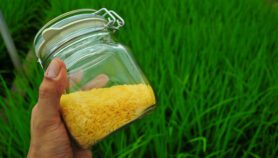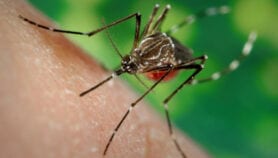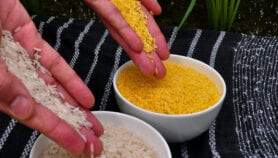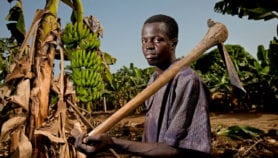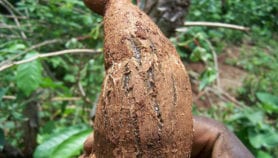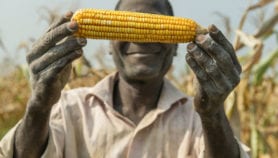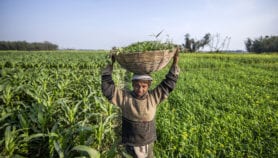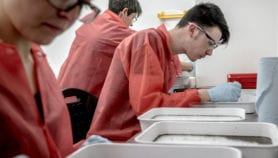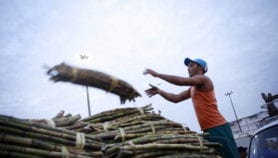By: Katie Mantell
Send to a friend
The details you provide on this page will not be used to send unsolicited email, and will not be sold to a 3rd party. See privacy policy.
 The draft genome sequences of two strains of rice — a staple food crop for half the world’s population — were published today (5 April).
The draft genome sequences of two strains of rice — a staple food crop for half the world’s population — were published today (5 April).
The findings will help plant breeders develop improved types of rice and other cereals, boosting efforts to reduce global poverty, say researchers.
“This is an important contribution to our capacity to help world health,” says Donald Kennedy, editor of Science, the journal that published the research. “Over the next 20 years, the rice genome … will make more of a difference to human health than the human genome that we published two years ago. It’s an extraordinary landmark.”
A team of researchers from the Beijing Genomics Institute sequenced the genome of the indica subspecies of rice, the most widely cultivated strain in China and most of the rest of Asia. Another group from the Switzerland-based biotech company Syngenta worked on the japonica strain prevalent in Japan and other countries with temperate climates.
Rice is the second plant — after Arabidopsis, a weed related to mustard — to have its genes sequenced.
But it is the first crop genome to be sequenced, and will have benefits that extend far beyond rice, says Steven Briggs, head of genomics at Syngenta. All cereal grains are closely related, which has allowed Syngenta to use the rice genome as a model to construct “virtual gene maps” of corn and wheat.
Once the genomes have been sequenced, scientists can attempt to improve crop varieties by introducing traits such as drought and salt tolerance and pest resistance.
“The rice genome map will revolutionalise plant breeding,” Briggs says. “Today [it] is like searching for a needle in a haystack. With gene maps, plant breeding will become a process of design.”
But many scientists have been critical of the way that Science has allowed Syngenta to publish its findings without making the gene sequence freely available in a public database.
Researchers from the state-financed Beijing Genomics Institute have followed the journal’s standard access policy by making their rice gene sequence freely available through the GenBank database.
However, in an attempt to protect its US$30 million investment in sequencing the rice genome, Syngenta has refused to release its data via GenBank. Instead, it is making the sequence available through its website or on a CD-ROM.
In what Briggs calls “an innovative access programme that balances humanitarian and commercial benefits”, free access will be granted for further research by any group. Academic or government researchers will be allowed to file patents on discoveries made using the map. But commercial researchers will have to pay to exploit the information in this way.
“I understand the concerns from the bioinformatics community that it is not in GenBank,” says Kennedy. But he adds that the public benefit of making the data available in the public domain — rather than in trade-secret status — greatly outweighs the cost of maintaining it in a private site rather than publicly-supported GenBank.
The new research shows that rice — Oryza sativa — is likely to have a more complex genetic makeup than human. Its genome contains between 42,000 and 63,000 genes, compared with 30,000 to 40,000 in the human genome.
Both research groups used the ‘whole shotgun’ technique in which the entire genome was broken into around 100,000 pieces. The genetic code of these fragments was then sequenced, and powerful computers sorted the pieces into the correct order.
The International Rice Genome Sequencing Project, an international consortium of publicly funded laboratories, is set to finish a more complete sequence, using a slower and more expensive technique, by 2004.
© SciDev.Net 2002
Link to Science editorial “The Importance of Rice”
Link to “A Draft Sequence of the Rice Genome (Oryza sativa L. spp. japonica)”
Link to “A Draft Sequence of the Rice Genome (Oryza sativa L. spp. indica)”
Photo credit: Nicky Lewis/SciDev.Net



